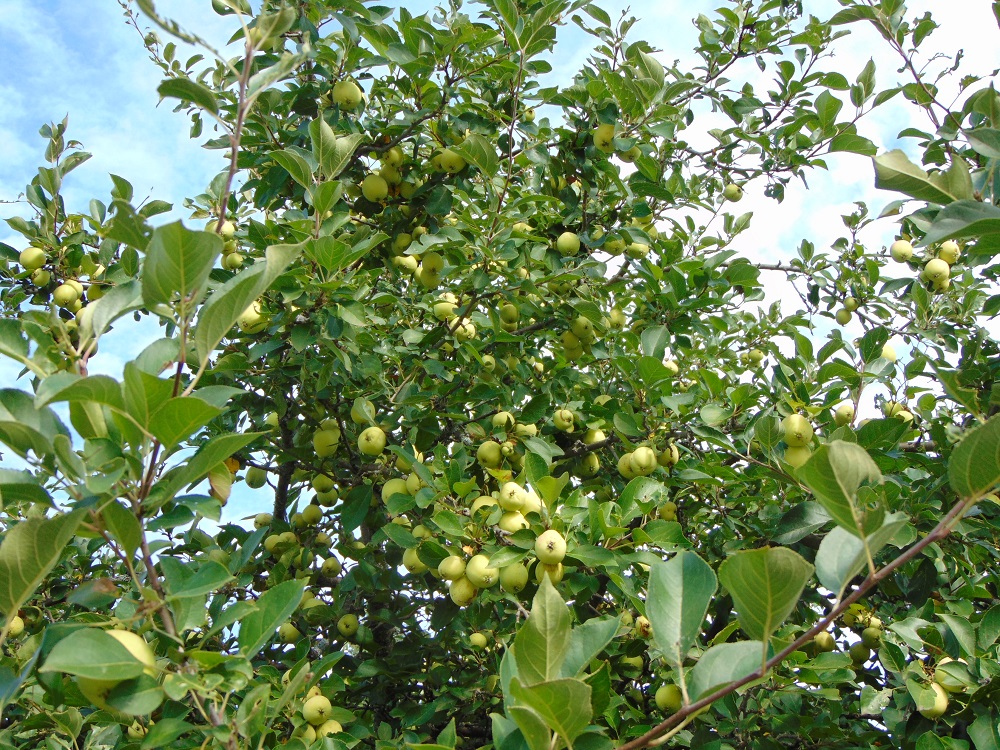If County resident Luba Cargill has her way, Haliburton will soon be competing with New York City over the nickname ‘The Big Apple’.
Having launched ATIP Haliburton last year – an organization committed to finding and promoting the existence of apple trees in the Highlands – Cargill has organized a two-day symposium May 16 and 17, which she says will bring some of the continent’s top apple identifiers and researchers to the community.
It all comes after a game-changing discovery late last year, which Cargill said proves the existence of native Haliburton apples.
“The provincial government has established a line showing where apples grow in Ontario, and Haliburton County is north of that line. Apples shouldn’t grow here, but we know now that they do,” Cargill said, referencing an 1890 edition of The Canadian Horticulturalist, which discusses the Haliburton apple.
After a County-based reader mailed two apple samples to the publication, accompanied with a letter, the now defunct magazine published a response, saying, “this is no doubt a purely local apple.” It was described as medium in size and a paleyellow colour, save for the side exposed to the sun, which turns carmine red marked with splashes and streaks of a deeper hue.
Cargill credited this discovery to Steve Hill, recently retired curator of the Haliburton Highlands Museum.
“It’s such an important find, because it proves to us that apples have grown in Haliburton County for well over a century,” Cargill said.
Since launching ATIP Haliburton, Cargill said she’s identified 177 apple tree locations, including 10 orchards, the smallest featuring about 10 trees and the biggest more than 200.
When putting plans together for the symposium, Cargill said her primary goal was to provide information to people that own apple trees on how to properly care for and cultivate them. Then, following the Haliburton apple discovery, she decided she wanted to get into the history of apples in the County.
She was discussing a potential itinerary with friends, who said Cargill should reach out to renowned apple hunter and orchardist, Tom Brown. Based in North Carolina, Brown spends much of his time searching for lost heirloom apple varieties across North America.
He is one of five keynote speakers at the symposium, joining Helen Humphries, author of The Ghost Orchard; Brian Husband, a University of Guelph professor and lead of the Ontario Heritage and Feral Apple Project; Pauline Plooard, of Haliburton County Master Gardeners, who will discuss her group’s heritage apple project; and Carmen Galea, ATIP Haliburton coordinator, who will provide a historical context and preliminary inventory of apple trees in the County.
There will be other speakers throughout the two-day event, including Aisha Malik of Harvest Haliburton, Gena Robertson of SIRCH Community Services, and Scott Ovell, the County’s director of economic development and tourism, who will address the benefits of apple trees for food security, climate, business, and tourism.
“We don’t have many large events in May. This will be very educational, people will learn a lot about apples… then enjoy a drive around the County for our self-directed apple blossom tour,” Cargill said. “I’d really like to see this become a big, annual, recurring event.”
The symposium will be held in Haliburton village May 16 and 17, location to be determined. For more information, visit appletreeshaliburton.ca.





